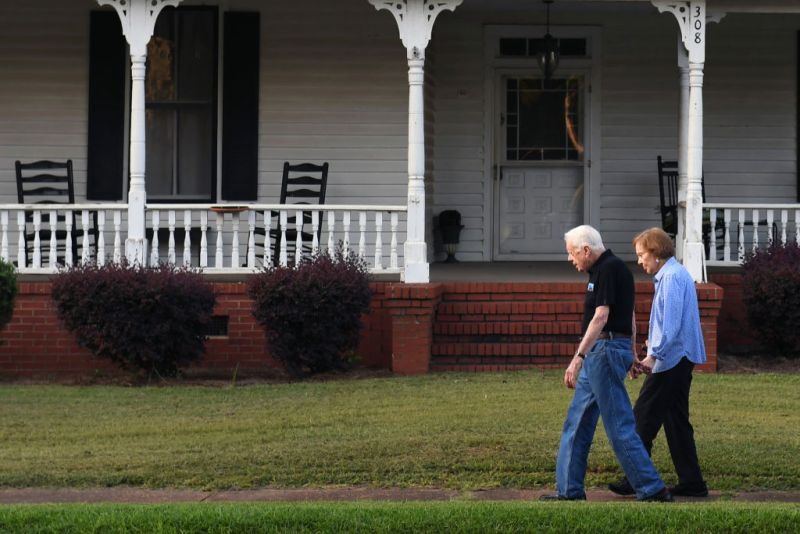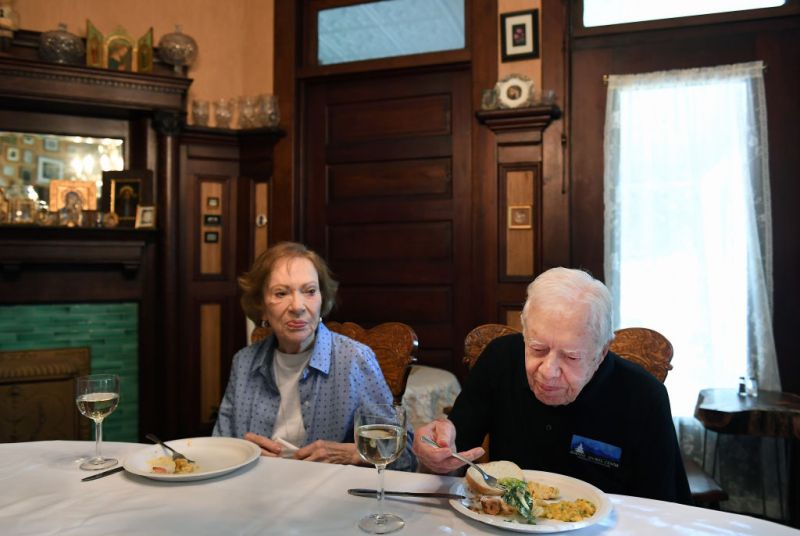James Earl Carter Jr. was born on October 1, 1924, in Plains, Georgia. His father, James Earl Carter Sr., was a prosperous businessman and a notable investor in farmland. Bessie Lilian, his mother, served as a nurse at the Wise Sanitarium, the place of Carter’s birth.
Carter’s early education took place at a local high school from 1937 to 1941. His ambition to follow in his father’s military footsteps, who served in the U.S. Army Quartermaster Corps during World War I, led him to fulfill his dream of joining the military. In 1943, he gained admission to the Naval Academy, marking the beginning of his military career.

In Phil Donahue and Marlo Thomas’ book “What Makes a Marriage Last,” Carter expressed, “I just felt compatible with her.” Following his graduation from the Naval Academy, Carter and his wife tied the knot in 1946. After retiring from the Navy to prioritize his family – including his wife and four children – and the family business, Carter constructed a ranch-style house in 1961 to meet their housing needs. The house, currently valued at $209,996 according to Zillow, also served as his residence after leaving the White House.
Unlike many of his predecessors and successors who capitalized on post-presidential popularity for financial gain, Carter returned to his roots. As reported by the Washington Post, he chose not to financially exploit his time in the White House, stating, “I don’t see anything wrong with it; I don’t blame other people for doing it. It just never had been my ambition to be rich.” Despite financial challenges, including selling off the peanut business to alleviate debt, Carter was able to lead a comfortable life. His $217,000 annual pension became a source of financial stability for him and his family.

In the 2019 fiscal year budget from the General Services Administration, Carter’s expenses for taxpayers amounted to $456,000. This was notably lower than the budgeted amounts for other former presidents, with George H. W. Bush allocated $952,000, and Barrack Obama, Bill Clinton, and George W. Bush each costing $1 million. Carter’s more frugal approach to post-presidential expenses showcased his commitment to avoiding financial exploitation of his time in the White House and his preference for a simpler lifestyle.

Carter’s down-to-earth lifestyle extends to his everyday choices, such as purchasing clothes at the local Dollar General. Despite his former status as president, he opts to fly commercially when traveling, eschewing the luxury of private flights. After leaving the White House, Carter embarked on a different path, teaching at Emory University and leading a Baptist Sunday School, highlighting his commitment to education and community engagement.
Scroll down for more..

